Boxwood, also known as Buxus or box, belongs to the Buxaceae family and is a highly popular genus consisting of 70 different species.
This evergreen shrub, commonly referred to as box or Buxus sempervirens, is native to various regions including southern, eastern, and southwest Asia, southern and western Europe, northern South America, Central America, Madagascar, Mexico, Africa, and the Caribbean. However, it is primarily found in Cuba, China, and Madagascar.
Boxwoods are widely recognized as the most favored bushes for landscaping, suitable for both formal and informal gardens due to their slow growth.
These small trees can grow anywhere from 2 to 12 meters tall. The leaves, which have a tough, leathery texture, are typically round or lanceolate in shape, ranging from 1.5 to 5 centimeters in length and 0.3 to 2.5 centimeters in width.
Although these shrubs rarely produce flowers, certain species exhibit small yellow-green flowers of both male and female sexes.
The fruits of boxwoods are small and capsule-like, containing several tiny seeds within their 0.5 to 1.5 centimeter length.
To ensure proper growth and maintenance of boxwoods’ thick evergreen foliage, these shrubs require cultivation in moist, well-drained, slightly acidic soil.
Short hedges make excellent borders and edging for houses and buildings, while taller boxwoods serve as superb hedges for screening against full sun and protection from harsh winter winds.
Research indicates that there are more than 200 varieties of boxwoods, with around 140 commercially available for cultivators to use.
In this blog post, we have compiled a comprehensive list of commonly used boxwood varieties worldwide, perfect for creating stunning landscape projects.
Various Kinds of Boxwood Shrubs
English Boxwood
Also known as dwarf boxwood due to its slow growth rate, English boxwood is an elegant evergreen shrub that adds beauty to any landscape. It is often found in prestigious areas like the colonial gardens of Williamsburg, Virginia, and even the White House.
The shrub is admired for its densely packed light-green leaves, which grow in a rounded form.
While English boxwood can reach up to three feet in height at maturity, the growth size varies among different boxwood varieties. Regular pruning can help maintain all types of English boxwoods.
The shallow roots of English boxwood require protection from excessive heat, and a layer of garden mulch around the plant can help. However, be cautious not to mulch too close to the trunk, as it may attract pests.
Winter bronzing is a common issue faced by English boxwood, where the green foliage changes to reddish-brown and eventually yellow due to the drying effects of sun and wind. To combat this problem, spraying an anti-desiccant on the shrubs in late November and January, as well as providing protective covering during winters, can be beneficial.
American Boxwood
Scientifically known as Buxus Sempervirens, American boxwood is a dark green, glossy evergreen shrub that is easy to maintain and resistant to pests and diseases.
Also called common boxwood, it can grow up to 10 feet in height, with some varieties reaching up to 20 feet.
American boxwood is ideal for colder regions, as it can withstand extremely cold temperatures and harsh winds.
While these sturdy boxwoods are generally disease-resistant, they can occasionally fall victim to root rot, canker, and nematodes. Ensuring ideal pH levels and soil conditions can help protect the shrubs from diseases.
Spraying a mixture of half water and half dish detergent on the plant is also recommended. American boxwoods come in various varieties, some of which include:
Dee Runk Boxwood
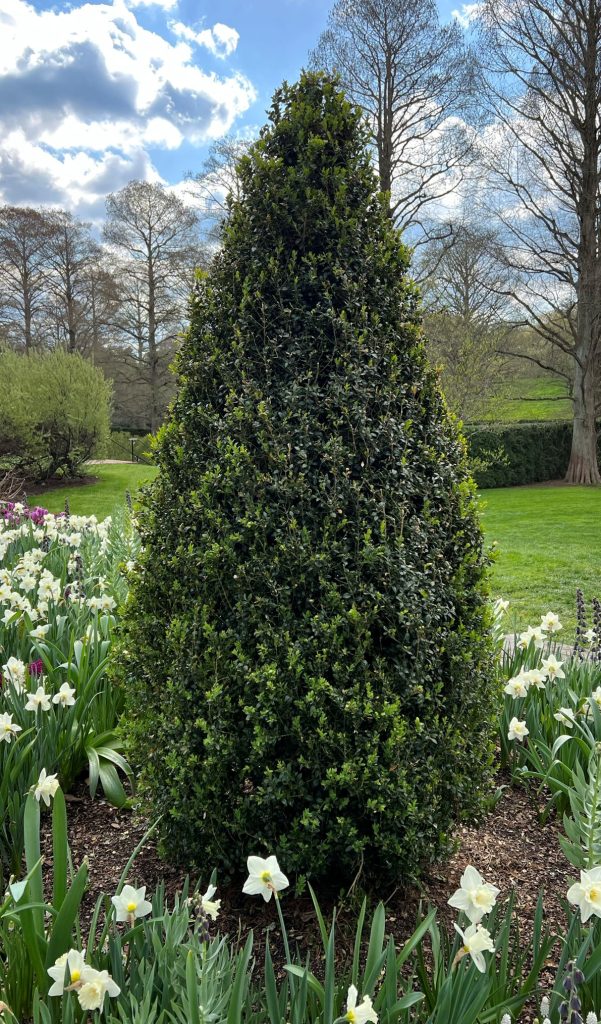
Also known by its botanical name, Buxus sempervirens, Dee Runk is a broad-leafed evergreen shrub that grows in a narrow, upright position. With oval-shaped dark green leaves, this tall plant can reach heights of 10 to 12 feet.
Dee Runk boxwood is suitable for planting in enclosed areas in front or backyards. It thrives in full sun or partial shade.
Fastigiata Boxwood
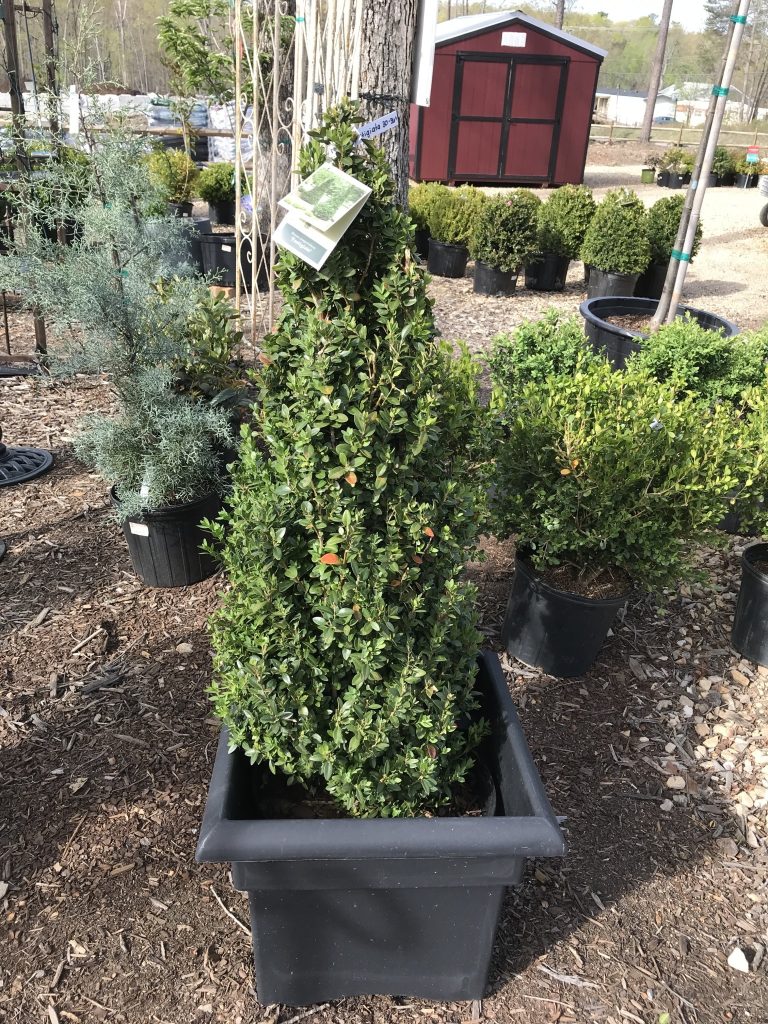
Fastigiata boxwood is a dense evergreen shrub with dark green foliage. Its tiny, glossy, oval leaves maintain their dark green color even in winter. The shrub grows in a pyramid structure that attracts bees.
Interestingly, deer tend to avoid this shrub. Fastigiata boxwood is ideal for hedges or screening, and it can coexist well with surrounding plants.
Vardar Valley Boxwood

Vardar Valley boxwood is a small, rounded tree native to woodlands and rocky hillsides. This evergreen shrub can grow as tall as a significant tree. As it matures, it produces elliptical, oval, and oblong-shaped leaves.
Like other American boxwoods, Vardar Valley has dark green leaves and thrives in moist soil with a slightly acidic pH level.
It tolerates pruning well and benefits from pruning in early spring to promote healthy growth. The plant requires extra protection during winters to prevent mite attacks.
Japanese Boxwood
Buxus Microphylla, commonly known as Japanese boxwood or littleleaf box, is a slow-growing evergreen shrub similar to English boxwood. It is tolerant of pruning and suitable for shaping purposes.
This hardy plant remains evergreen from April to May, with its blooming period occurring in spring. When in full bloom, the rounded plant displays vibrant green leaves, making it an excellent choice for low hedges.
Japanese boxwoods produce flowers of both male and female sexes, attracting flies and bees for pollination.
To ensure healthy growth, Japanese boxwoods require well-drained soil with an acidic pH level. The foliage emits a pungent scent when the soil is wet. The plant thrives in both partial shade and full sunlight, as long as the soil remains moist. It is an easy-to-care-for plant that requires occasional maintenance.
Due to its slow growth, pruning is not required as frequently. Pruning once or twice a month, depending on desired manicured appearance, is sufficient. Regular watering is essential, allowing the plant to dry out between watering sessions.
Fertilizing three times a year (spring, summer, and fall) with a high-quality granular fertilizer is recommended. Some popular Japanese boxwood varieties include:
Green Beauty Boxwood
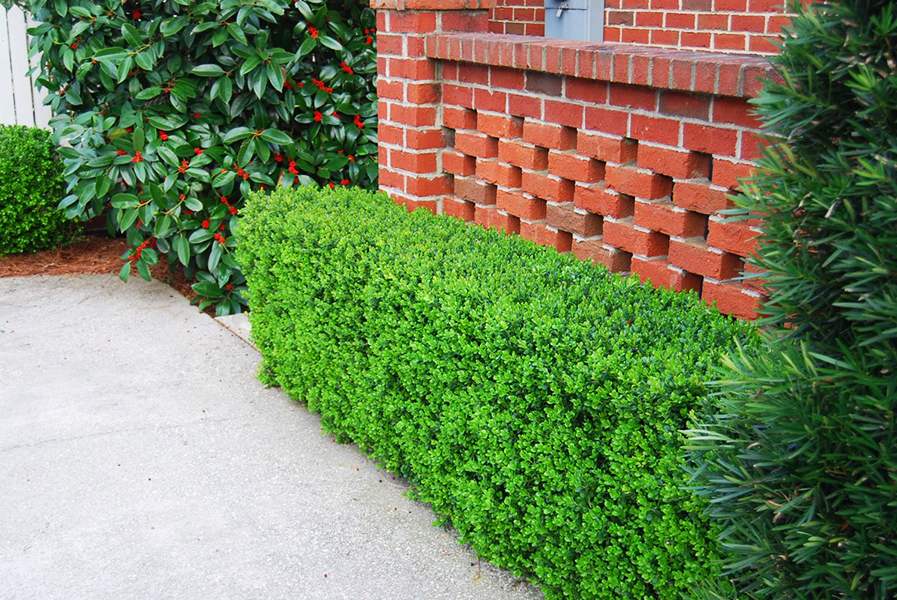
Green beauty boxwood is an excellent choice for small hedges. Its dark green foliage remains vibrant even during hot summer months. Compared to other boxwood types, green beauty is more tolerant of humidity and drought.
This evergreen hedge thrives in partial to full sun. It has a moderate growth rate, reaching heights of 4 to 6 feet and similar widths. Green beauty boxwood serves various landscape purposes, such as accentuating entry areas and foundation beds. Its dense foliage provides shelter for birds and small animals.
Morris Midget Boxwood
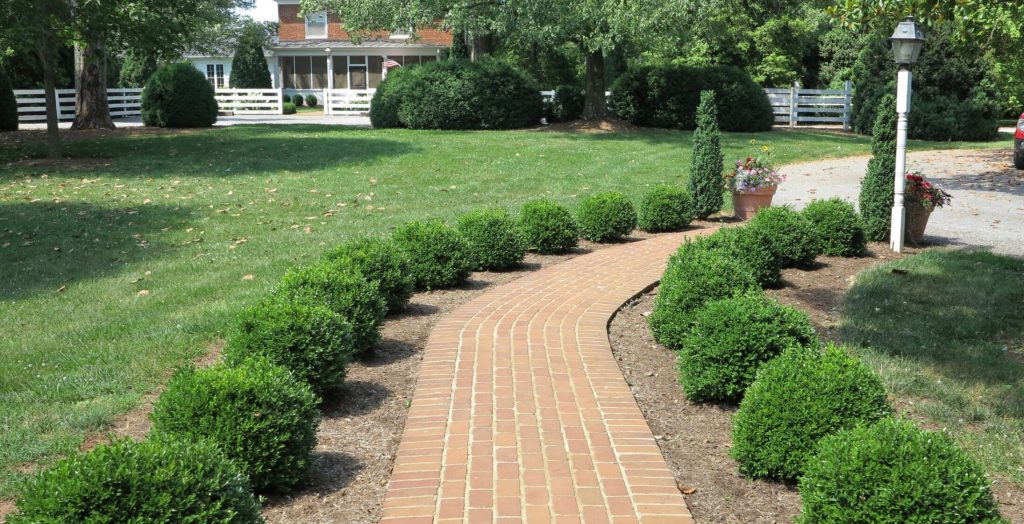
Morris midget boxwood is a compact dwarf variety with thick evergreen foliage. It is ideal for creating low hedges or edging along pathways and gardens.
Similar to green beauty boxwood, this dwarf hedge plant requires partial to full sun and regular watering for optimal growth.
Morris midget has a slow growth rate, reaching heights of 12 inches and widths of 18 inches. It pairs well with companion plants like spirea, maiden grass, coneflower, lilac, and gayfeather.
Morris Dwarf Boxwood
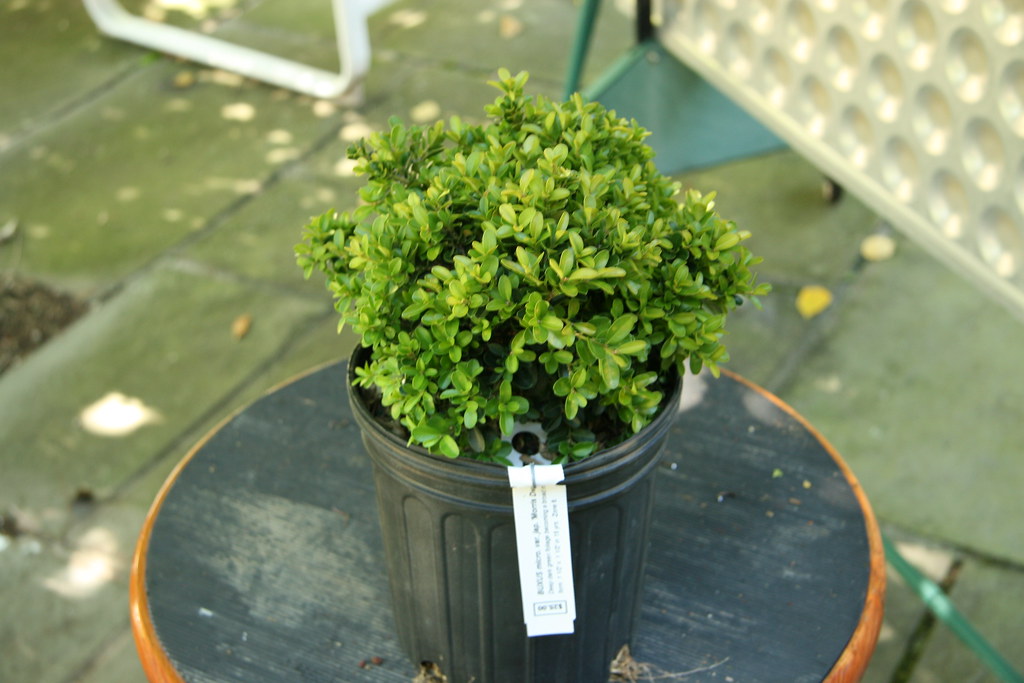
Morris dwarf boxwood is a slow-growing plant that grows to a height of 1 to 2 feet and spreads 1 to 2 inches in width.
This small-sized, yellowish-green shrub requires little to no maintenance. It does not require frequent watering due to its compact size. However, it thrives in partial to full sun and moist, well-drained soil.
Morris dwarf boxwood is hardy in zones 5 to 8 and is not susceptible to insect infestations.
Korean Boxwood
Botanically named Buxus Sinica Insularis, Korean boxwoods are broadleaf evergreen plants that grow upright to about 2 feet tall. As they mature, the shrubs tend to become wider rather than taller, developing an open-branch structure.
Similar to many other boxwood types, Korean boxwoods have dense foliage and are covered with evergreen leaves.
In the summer, the leaves showcase a rich dark green color, while in winter, they transition to a bronze shade. During spring, the shrub produces scented cream-toned blossoms pollinated by bees. These flowers later transform into seed capsules in the fall.
Korean boxwood is cold-hardy, withstanding severe winters down to USDA hardiness zone 4. It is crucial to select a location that receives partial sunlight and has moist, loamy soil.
To protect the evergreen foliage from desiccation during winter, it is essential to cultivate Korean boxwoods in areas sheltered from harsh winter winds. Otherwise, they may suffer from winter burn.
This boxwood variety is ideal for hedges and borders, but regular pruning is necessary to maintain its lush green foliage.
Hybrid Boxwood
Hybrid boxwoods encompass various boxwood varieties. Here are a few examples:
Green Gem Boxwood
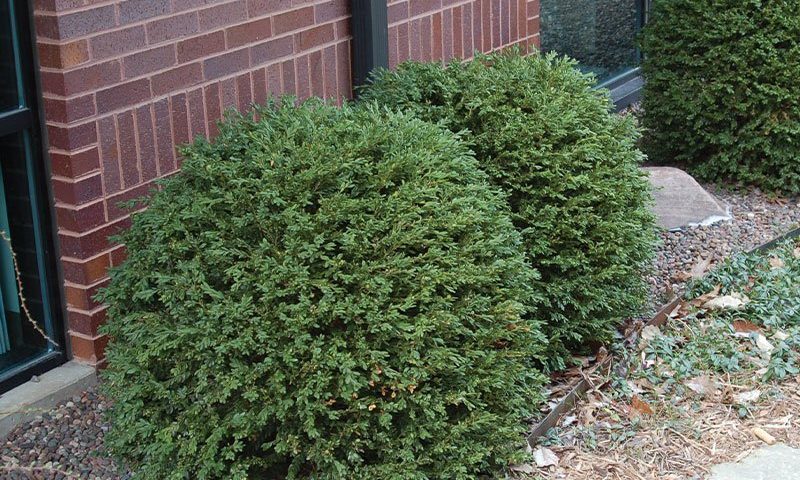
Also known as Buxus, green gem boxwood is a broad-leafed evergreen plant that blooms in spring. It thrives in average moisture, well-drained, slightly acidic soil, and partial to full sun or shade.
This prized shrub features a round shape and reaches heights of 3 to 4 feet tall and wide.
When planting green gem boxwood, avoid placing it too close to other plants or near shallow roots, as wind circulation may damage the shrub. In USDA zones 4 and 5, it is best to find a sheltered location for this plant to protect it from strong winter winds. Covering the shrub during winter helps prevent snow accumulation on stems and branches.
Glencoe Boxwood
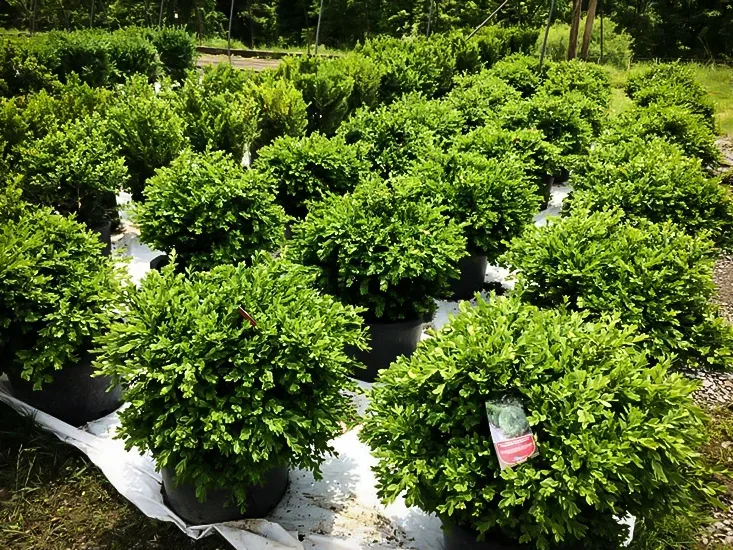
Also known as Chicagoland Green Boxwood, Glencoe boxwood is an evergreen shrub that maintains its glossy green foliage throughout winter.
It is considered cold-hardy and resembles English boxwoods, featuring the classic oval low hedge shape.
This dark green shrub requires regular watering, especially during extreme heat conditions. It has a compact size, growing up to 3 to 4 inches tall in both height and width. In spring, the beautiful shrub produces white blossoms that attract birds.
Green Mound Boxwood
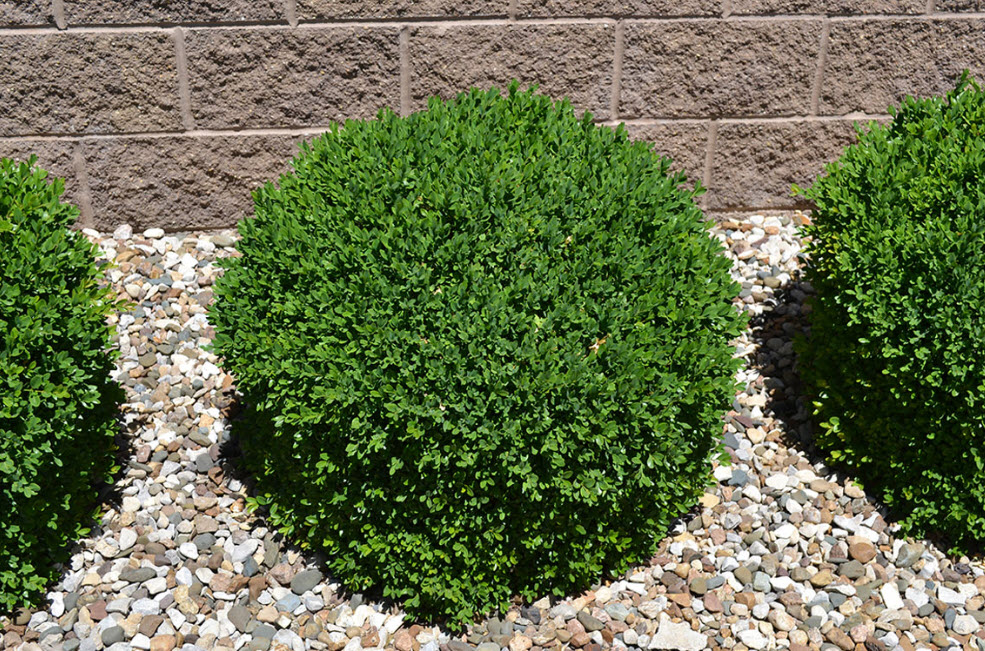
Green mound boxwood is a low hedge shrub with medium-sized oval leaves. The foliage retains its green color year-round, and the plant is tolerant of pruning and shearing.
This boxwood variety thrives in full shade to partial sun. Full sun exposure may cause winter scorch or mite attacks on the foliage.
Green Velvet Boxwood
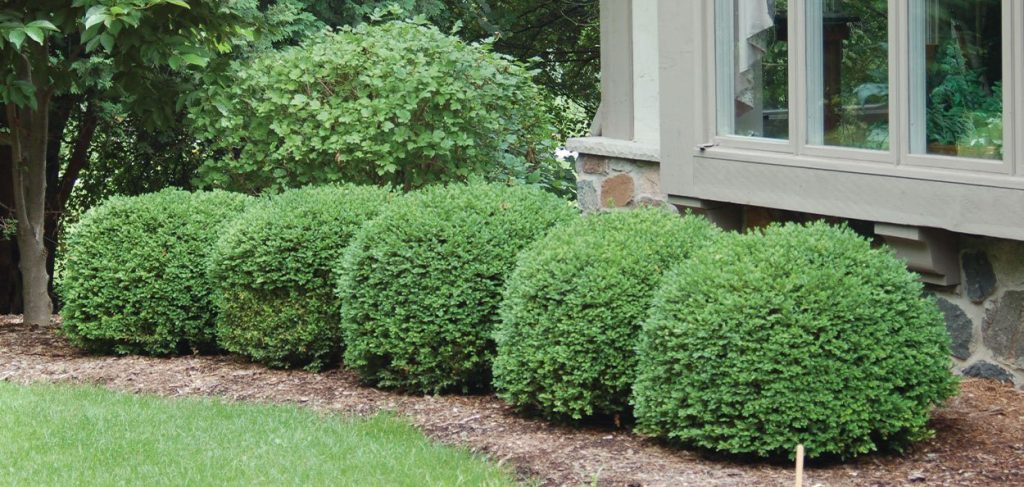
Green velvet boxwood is a dense-bodied boxwood variety that is ideal for low hedges. Like green mound boxwood, it maintains its green color throughout winter and requires minimal care and maintenance, including watering and trimming.
Some companion plants that complement green velvet boxwood include lilac, maiden grass, weigela, and coneflower.
Boxwood Varieties and Colors
With over 200 types and 140 commercially available, boxwoods are among the most popular landscape shrubs.
Known for their adaptability, easy maintenance, and compact forms, boxwoods come in various growth forms, leaf shapes, and colors to suit different gardens. Boxwood colors vary based on the specific plant type.
English and American boxwoods are classic choices for creating showy and manageable hedges. American boxwoods include varieties like North Star and Jensen, which have evergreen-colored foliage, and Elegantissima, featuring creamy white edges on green leaves.
Traditional Japanese boxwoods display bright green leaves, while wintergreen boxwood leaves turn light bronze during winter.
Wedding Ring boxwood has lime-colored edges and evergreen centers. Fastigiata boxwood showcases blue-green foliage and upright growth, beautifully representing the colors.
Green Gem boxwood leaves turn bronze in winter, while Green Mountain remains green throughout the year.
Korean boxwood varieties are hardy, with leaves turning brown during extremely low temperatures and regaining their green color in spring. Their spring flowers typically appear in yellow or green hues.
FAQs
How much water do boxwoods need? Are boxwoods drought-tolerant?
Boxwoods require minimal watering. If following a schedule, they should be watered every 10 to 12 days. These shrubs are able to withstand drought periods and are suitable for areas with uncertain rainfall.
Does boxwood stay green in winter?
Yes, boxwoods remain green throughout the winter as they are evergreen plants.
Can you propagate boxwood?
Yes, boxwoods can be propagated by taking stem cuttings and rooting them.
Are boxwood roots invasive?
If not properly managed, boxwood roots can invade nearby flower gardens, depriving neighboring plants of nutrients.
When do boxwoods bloom?
Boxwoods typically bloom in spring, with small yellow or white flowers.
What can be done with boxwood clippings?
After pruning, boxwood clippings can be chopped and added to compost if not infected or showing signs of disease. If unsure about their condition, it’s safer to bag them and dispose of them in recycling.
How long do boxwood shrubs live?
With proper maintenance, boxwood shrubs can live between 15 and 20 years before needing replacement.
Do boxwood shrubs flower?
Yes, boxwood shrubs produce small flowers in yellow and white colors.
Do boxwood bushes smell?
Boxwood bushes have a pungent smell similar to ammonia, often compared to cat urine.
Are boxwood shrubs evergreens?
Yes, boxwood shrubs are evergreen, maintaining their green color throughout their lifespan unless affected by diseases or age.
How much space do boxwoods need?
When planting boxwood shrubs, allow at least 5 feet of space between plants to accommodate their growth.
Is boxwood fast-growing?
Boxwoods are not fast growers, taking years to reach maturity. Their slow growth rate contributes to their longer lifespan compared to other shrubs.
Do boxwood wreaths last?
Freshly made boxwood wreaths without preservation can last up to two weeks. Preserved boxwood wreaths can be reused for two or more years.
Can boxwood be divided?
Boxwood roots can be divided for propagation purposes.
Can you split boxwood?
Boxwoods can be split if they have grown too large, but caution must be exercised to avoid damaging the roots.